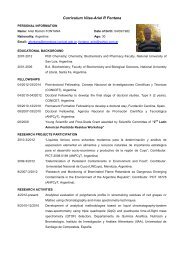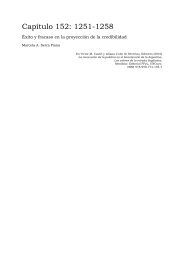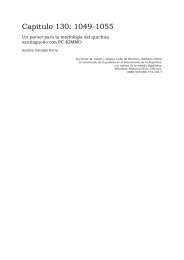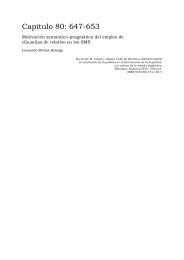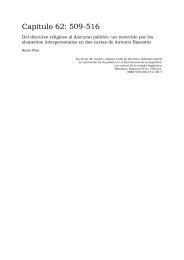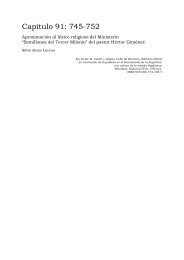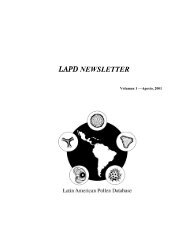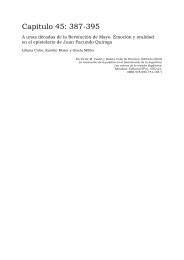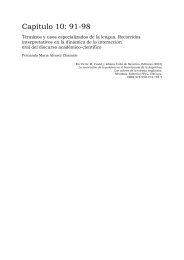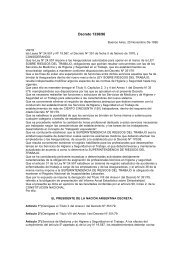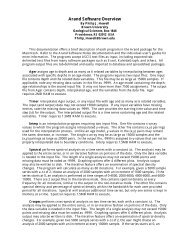Package 'fExoticOptions' - CRAN
Package 'fExoticOptions' - CRAN
Package 'fExoticOptions' - CRAN
You also want an ePaper? Increase the reach of your titles
YUMPU automatically turns print PDFs into web optimized ePapers that Google loves.
20 LookbackOptions<br />
Details<br />
TypeFlag usually a character string either "c" for a call option or a "p" for a put option,<br />
except for<br />
[ExtremeSpread*] -<br />
a character string either,<br />
"c" for the extreme call,<br />
"p" for the extreme put,<br />
"cr" for the reverse extreme call,<br />
"pr" for the revers extreme put.<br />
X the exercise price, a numeric value.<br />
Floating Strike Lookback Options:<br />
The lookback call (put) option gives the holder the right to buy (sell) an asset at its lowest (highest)<br />
price observed during the life of the option. This observed price is applied as the strike price. The<br />
payout for a call option is essentially the asset price minus the minimum spot price observed during<br />
the life of the option. The payout for a put option is essentially the maximum spot price observed<br />
during the life of the option minus the asset price. Therefore, a floating strike lookback option is<br />
always in the money and should always be exercised. Floating strike options can be priced analytically<br />
using a model introduced by Goldman, Sosin, and Gatto (1979). Monte Carlo simulation is<br />
used for the numerical calculation of a European style floating strike options.<br />
[Haug’s Book, Chapter 2.9.1]<br />
Fixed Strike Lookback Options:<br />
For a fixed strike lookback option, the strike price is known in advance. The call option payoff<br />
is given by the difference between the maximum observed price of the underlying asset during the<br />
life of the option and the fixed strike price. The put option payoff is given by the difference between<br />
the fixed strike price and the minimum observed price of the underlying asset during the life of the<br />
option. A fixed strike lookback call (put) option payoff is equal to that of a standard plain call (put)<br />
option when the final asset price is the maximum (minimum) observed value during the options life.<br />
Fixed strike lookback options can be priced analytically using a model introduced by Conze and<br />
Viswanathan (1991).<br />
[Haug’s Book, Chapter 2.9.2]<br />
Partial-Time Floating Strike Options:<br />
For a partial-time floating strike lookback option, the lookback period starts at time zero and ends<br />
at an arbitrary date before expiration. Except for the partial lookback period, the option is similar<br />
to a floating strike lookback option. The partial-time floating strike lookback option is cheaper than<br />
a similar standard floating strike lookback option. Partial-time floating strike lookback options can<br />
be priced analytically using a model introduced by Heynen and Kat (1994).<br />
[Haug’s Book, Chapter 2.9.3]<br />
Partial-Time Fixed Strike Options:<br />
For a partial-time fixed strike lookback option, the lookback period starts at a predetermined date




